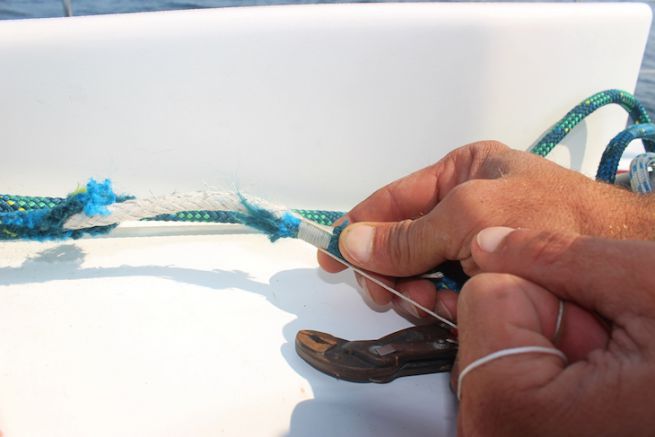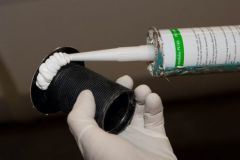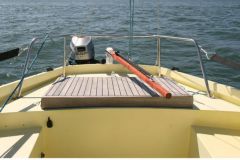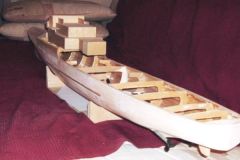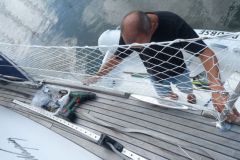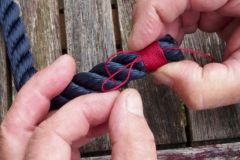1 - With the openings of the repeating blockers, sometimes under load, the rope sheaths are subject to high wear. Hence the interest of a sacrificial overlay at the level of the blockers. However, when the damage is done, that is, when the sheath has failed and only the core remains to hold your mainsail, the risk of the sheath being blocked either in the blocker or in the mast sheaves is significant.
Scotch could be used, but this solution is extremely temporary. Very quickly, the sheath will disengage from the core and create an inevitable jamming which will certainly require cutting the halyard definitively, seeing it disappear into the mast.

2 - Above all, we should not expect to see the halyard slip through the blocker. So we mustn't let her go. On the contrary, it is necessary to regain some tension on the winch to get past the raking area. This will allow this repair to be carried out behind the blocker, i. e. under low load and in the cockpit.

3 - We take in the on-board first aid toolkit the surlier thread, the needles, the cheekbones and a pair of pliers. We will make two sewn surliures that will hold the sheath on the core.

4 - We will start by making stitches about ten centimetres behind the tear and going towards it. The idea is to have a healthy string sewn onto the soul.

5 - The rope is pierced through at 45 degrees, making points that are close enough to each other until it tears.

6 - We will start near the tear by binding the core very firmly to the sheath. This surliure shall be at least one and a half times the diameter of the rope (10 mm = 15 mm). The tension of the surlier thread already provides mechanical support, but we will reinforce it with a stitching of the surlier.

7 - The surliure will be tied along its length, which will cause it to be sewn to the string. The minimum is a round trip from one end of the surliure to the other.

8 - The surliure is almost finished. You could tie a knot and cut the thread, but it is better to drown it in the rope by doing a few stitches

9 - Cutting the remaining thread flush with the rope
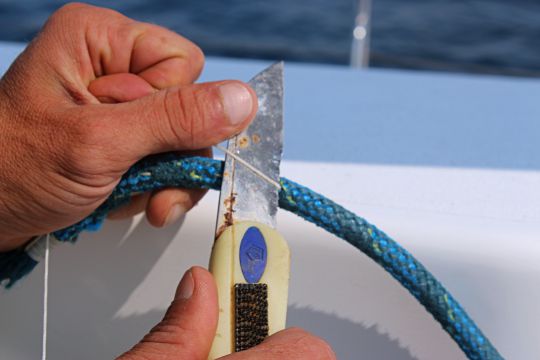
10 - To protect our work at the points of friction, it is preferable to wrap it with tape. Here, only insignia is available, which will be suitable for this temporary repair.

11 - The same operation is performed on the other side of the sheath failure.

12 - Your halyard is ready to iron through the blockers and around the sheaves. But it is absolutely necessary to shift the raking point on the blocker, because there is no longer any protective sheath there. The first solution is to over-tension the halyard so that the jaws of the blocker act on a healthy part of the rope. The second, more radical solution is to shorten the halyard by a good one metre. In addition to the stitched surliure, the sheath will be held on the core by constriction effect (self-locking of the sheath braid on the core).

Photo credits: Bateaux.com
